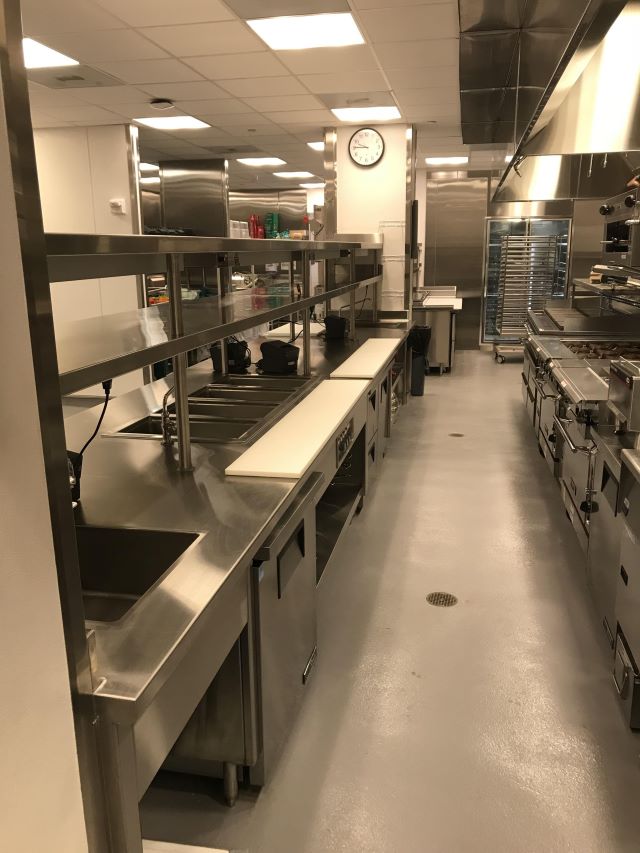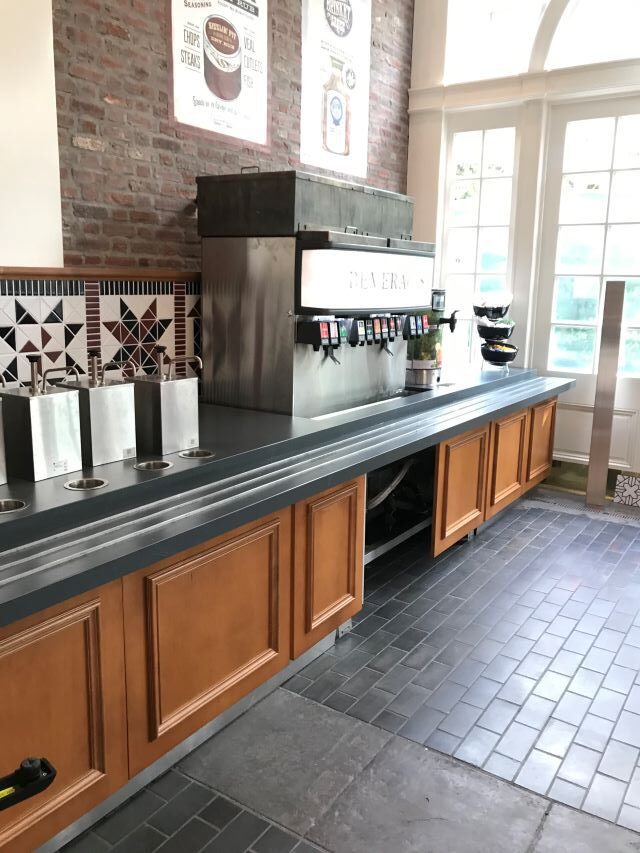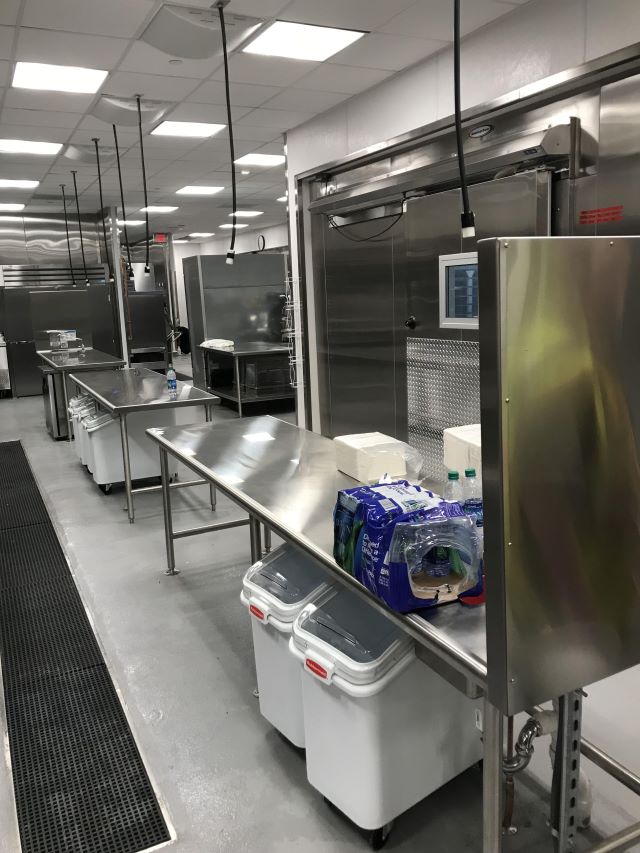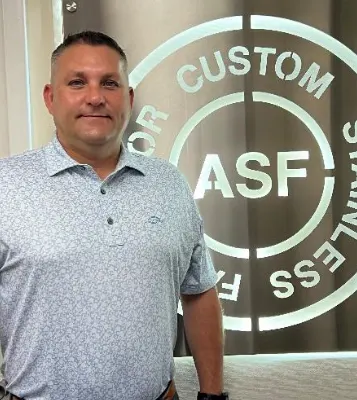While stainless steel equipment promises durability, it can quickly deteriorate without proper maintenance in your commercial kitchen. You’ll uncover that protecting your substantial investment isn’t complicated, but it does require consistent attention to detail and the right approach. From choosing appropriate cleaning agents to understanding the science behind corrosion prevention, your maintenance strategy will determine whether your custom stainless steel sinks and surfaces remain pristine or succumb to premature wear. Considering the daily challenges of keeping your kitchen equipment in top condition, you’ll want to understand these vital maintenance principles that can save you thousands in replacement costs.
Understanding Stainless Steel Properties

Stainless steel’s unique composition makes it the material for commercial kitchens. When working with this remarkable alloy, you’ll benefit from its core structure of iron and carbon, enhanced by a minimum of 10.5% chromium. This composition creates a self-healing chromium oxide layer with superior corrosion resistance properties, making it ideal for demanding kitchen environments.
The versatility in applications stems from its non-reactive nature with acidic foods and its ability to withstand extreme temperatures without compromising structural integrity. Stainless steel types 304 and 316 dominate the food service industry, 316 offering elevated protection against corrosive elements.
The advantages over other materials become clear when considering its non-porous surface, which prevents bacterial growth and simplifies cleaning procedures.
The importance of surface finish can’t be overstated in commercial settings. Manufacturers carefully control the material’s composition and finishing techniques during production to guarantee a smooth, sanitizable surface. This careful engineering results in a material that maintains its structural integrity even under repeated exposure to heat, moisture, and regular cleaning protocols.
Daily Cleaning Best Practices
Your kitchen’s daily cleaning routine forms the foundation of effective stainless steel maintenance. Begin each shift with a routine surface inspection of all custom stainless steel sinks and kitchen equipment, identifying any spots, stains, or fingerprints that require immediate attention. Implement quick spot cleaning throughout the day using a microfiber cloth dampened with warm, soapy water to address spills and splatters before they set.
Perform thorough daily cleaning at the end of each shift using a mild cleaning solution and working toward the steel’s grain. Don’t let food residue or cleaning agents sit on surfaces – remove them promptly to prevent corrosion. Apply proper drying techniques by using clean, lint-free cloths to prevent water spots and streaking. Remember to wipe surfaces completely dry, as standing water can lead to mineral deposits.
To maintain consistent schedule monitoring, create a cleaning checklist that staff must complete and sign off on. Track completion times and cleaning quality to guarantee standards aren’t slipping. This systematic approach helps prevent buildup, maintain the steel’s appearance, and extend its lifespan while supporting food safety compliance.
Proper Cleaning Tools and Supplies
Selecting the right cleaning tools and supplies is indispensable for effective stainless steel maintenance. You’ll need high-quality microfiber cloths that won’t scratch surfaces while trapping dirt and debris effectively. These specialized cloths work best when paired with abrasive-free solutions specifically formulated for custom stainless steel sinks and surfaces.
Water temperature factors play a pivotal role in your cleaning routine. Use warm water between 110-120°F to help dissolve grease without causing thermal shock to the metal surface. Regarding soap selection criteria, choose mild, pH-neutral detergents that won’t leave residue or cause discoloration. Avoid cleaners containing chlorides or bleach, as these can damage the protective layer of your stainless steel equipment.
Your drying techniques matter just as much as your cleaning methods. After washing, use a clean microfiber cloth to dry the surface thoroughly toward the steel’s grain. This prevents water spots and streaking while maintaining the metal’s natural sheen. Keep separate cloths for cleaning and drying to prevent cross-contamination and ensure optimal results. Store your cleaning supplies in a designated area away from food preparation zones to maintain proper sanitation standards.
Preventing Rust and Corrosion
The battle against rust and corrosion in commercial kitchens begins with understanding how stainless steel’s protective chromium oxide layer functions. When this layer becomes compromised through exposure to acidic foods, moisture, or harsh cleaning agents, you must implement specific oxidation prevention techniques to maintain equipment integrity.
To guarantee effective surface discoloration mitigation, immediately clean any spills and avoid letting water or food residue sit on surfaces. When selecting equipment, opt for grade 316 stainless steel in high-moisture areas, as it offers superior corrosion resistance. Apply corrosion-inhibiting coatings, such as food-grade mineral oil or specialized stainless steel polish, to create a protective barrier against environmental elements.
Your humidity control strategies should include proper ventilation and regular surface drying. Be mindful of abrasive cleaning considerations – avoid harsh scrubbers that can scratch the protective layer. Instead, use soft cloths and appropriate cleaners. Implement a regular inspection routine to check for pitting or compromised integrity signs. Addressing these issues promptly and maintaining consistent preventive measures will drastically extend your equipment’s lifespan while preserving its protective chromium oxide layer.
Dealing With Tough Stains

Even well-maintained stainless steel surfaces can develop stubborn stains that require specific cleaning techniques exceeding routine maintenance. When dealing with these challenging spots, you’ll need to employ targeted solutions while preventing discoloration of the metal surface.
For stubborn oil removal, create a solution of warm water and mild dish soap. Use a soft-bristled brush to work the solution into the affected area, always following the grain of the metal to avoid scratches. When eliminating burnt-on grime, make a paste using baking soda and water. Apply this mixture to the stain and gently scrub with the metal’s grain pattern.
To guarantee streak-free drying and maintain shine, thoroughly rinse the surface after any cleaning treatment. This step removes residual cleaning agents that could leave water spots or dull the finish. Remember to avoid abrasive cleaners or harsh scrubbing pads, as these can damage the protective layer of your custom stainless steel sinks and surfaces and compromise their professional appearance.
Safe Chemical Usage Guidelines
Proper product handling and usage remain indispensable for safety and stainless steel preservation when working with cleaning chemicals in commercial kitchens. You’ll need to establish strict protocols for chemical storage, keeping all cleaning agents in their original containers in a cool, dry area away from food preparation zones. Always follow the manufacturer’s dilution guidelines precisely to prevent damage to surfaces and guarantee optimal cleaning effectiveness.
Implement comprehensive safety precautions by requiring personal protective equipment like gloves, goggles, and appropriate footwear when handling chemicals. You should maintain clear documentation of all cleaning products’ Safety Data Sheets (SDS) and ensure they’re readily accessible to staff. Train your team on proper disposal protocols, including never mixing different chemicals and using designated disposal containers for used solutions.
Focus on exposure mitigation by providing adequate ventilation during chemical use and installing emergency eyewash stations nearby. Don’t store incompatible chemicals together, and always label secondary containers with contents and handling instructions. When applying cleaners to custom stainless steel sinks and surfaces, work in small sections and rinse thoroughly to prevent chemical residue buildup that could compromise the metal’s integrity.
Common Maintenance Mistakes
Despite best intentions, commercial kitchen staff often need to improve their maintenance of custom stainless steel sinks and surfaces. The most damaging mistake is using harsh abrasives like steel wool or scouring pads, which create microscopic scratches where bacteria can hide and corrosion can begin. These scratches diminish the surface’s natural luster and compromise its protective layer.
Another common error is improper drying methods, as leaving surfaces wet can lead to water spots and mineral deposits. Following the steel grain, you must dry surfaces thoroughly with clean microfiber cloths.
Inconsistent cleaning routines and neglecting high-traffic areas allow grease, fingerprints, and food particles to accumulate, making them harder to remove.
You’re also likely to encounter problems when failing to inspect surfaces regularly for signs of damage or wear. Early detection of scratches, rust spots, or discoloration enables prompt intervention before issues worsen. Remember that preventing damage is more cost-effective than replacing damaged surfaces.
Professional Deep Cleaning Schedule
Regular deep cleaning of stainless steel surfaces should complement your daily maintenance routine. To maintain ideal conditions, you’ll need to establish recurring cleaning intervals, typically monthly or quarterly, depending on your kitchen’s usage and environmental factors.
When scheduling professional service offerings, select contractors who specialize in stainless steel restoration and possess the proper equipment and expertise. These specialists will implement thorough restoration methods while adhering to safety protocols and using appropriate protective equipment. You’ll want to ensure they use cleaning solutions specifically formulated for commercial-grade stainless steel surfaces.
Implement a proactive surface inspection program to identify when deep cleaning is necessary. Watch for signs of deterioration, such as dulling, discoloration, or texture changes that require professional intervention. Don’t wait until problems become severe – addressing issues early prevents costly repairs.
Maintaining cleaning records is crucial for tracking your maintenance efforts. Document each deep cleaning session, including dates, procedures, and any areas requiring special attention. These records will help you establish effective cleaning frequencies and demonstrate your commitment to maintaining sanitary conditions in your commercial kitchen.
Equipment-Specific Care Instructions
Different types of stainless steel equipment require specific maintenance approaches to confirm peak performance and longevity. When dealing with variations in stainless steel texture across your kitchen equipment, you must adjust your cleaning methods accordingly. For sinks and countertops with brushed finishes, clean with mild detergent and warm water, following the grain direction to prevent scratching.
You’ll need to adapt your stainless steel cleaning agents for stainless steel finish alternatives, such as mirror or matte surfaces. Use non-abrasive cleaners specifically formulated for your equipment’s finish type. After disinfecting stainless steel surfaces, ensure thorough drying to prevent water spots and potential corrosion. Regular stainless steel polish application helps maintain the protective chromium oxide layer and reduces fingerprint visibility.
Pay special attention to equipment-specific requirements. Refrigeration units may need more frequent cleaning around gaskets while cooking surfaces require immediate attention to food spills. If you notice any rust formation, address it promptly with gentle cleaning methods and apply appropriate protective coatings. Remember to maintain detailed cleaning logs for each piece of equipment to track maintenance schedules and identify potential issues early.
Long-Term Protection Strategies

Successful long-term protection of stainless steel equipment requires a multi-layered approach focused on prevention and consistent maintenance. To establish effective oxidation prevention techniques, you must regularly apply food-grade mineral oil or specialized protective coating applications that create a barrier against corrosive elements.
Surface conditioning methods play a pivotal role in maintaining your equipment’s integrity. You’ll want to use environment-friendly polish options that won’t compromise the chromium oxide layer while providing lasting protection. When selecting specialty maintenance products, opt for those specifically designed for commercial kitchen use, avoiding harsh chemicals that can damage the steel’s surface.
You should implement a systematic approach to protective maintenance by:
- Conducting weekly inspections for rust formation
- Applying protective coatings monthly
- Using microfiber cloths and soft-bristled brushes for daily cleaning
- Maintaining proper humidity levels in storage areas
- Training staff on proper cleaning protocols
Expert Maintenance: The Key to Long-Term Equipment Performance
Implementing comprehensive maintenance strategies for your stainless steel equipment isn’t just about preserving its appearance—it’s about protecting your investment and ensuring operational efficiency. Proper maintenance protocols, from daily cleaning to professional deep cleaning services, are crucial in extending equipment lifespan and maintaining food safety standards.
All Southern Fabricators (ASF) has been at the forefront of custom stainless steel fabrication for over five decades, understanding commercial kitchens’ unique challenges in maintaining their equipment. Our expertise goes beyond manufacturing—we’re committed to helping our clients maintain their equipment’s peak performance through proper care and maintenance.
Don’t wait until issues arise with your stainless steel equipment. Contact All Southern Fabricators today at (800) 878-2732 or email moreinfo@allsouthern.tempurl.host for expert guidance on maintaining your kitchen equipment and exploring custom solutions that meet your needs. Our team of specialists is ready to help you implement effective maintenance strategies that will protect your investment for years.

